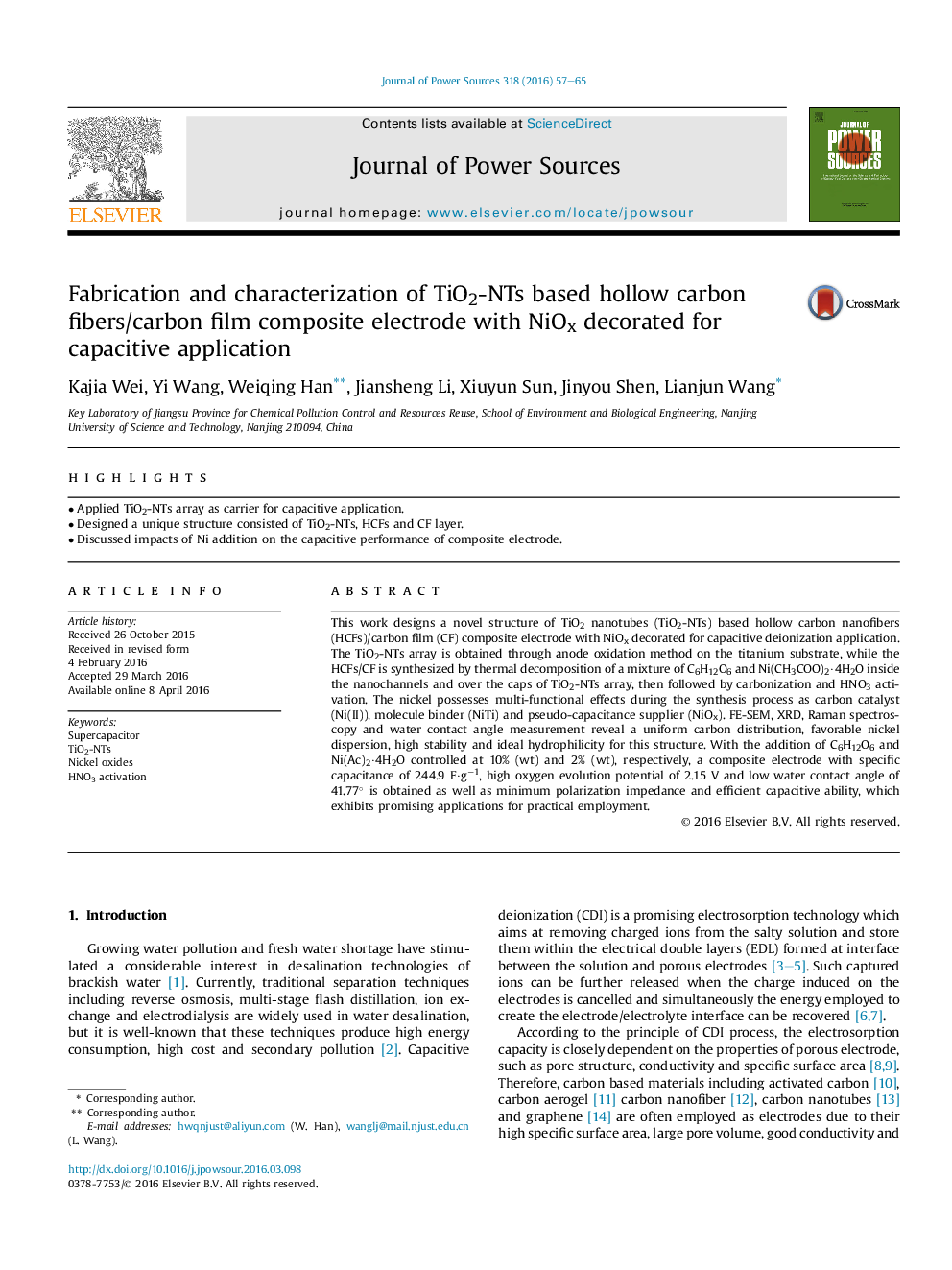| Article ID | Journal | Published Year | Pages | File Type |
|---|---|---|---|---|
| 1285287 | Journal of Power Sources | 2016 | 9 Pages |
•Applied TiO2-NTs array as carrier for capacitive application.•Designed a unique structure consisted of TiO2-NTs, HCFs and CF layer.•Discussed impacts of Ni addition on the capacitive performance of composite electrode.
This work designs a novel structure of TiO2 nanotubes (TiO2-NTs) based hollow carbon nanofibers (HCFs)/carbon film (CF) composite electrode with NiOx decorated for capacitive deionization application. The TiO2-NTs array is obtained through anode oxidation method on the titanium substrate, while the HCFs/CF is synthesized by thermal decomposition of a mixture of C6H12O6 and Ni(CH3COO)2·4H2O inside the nanochannels and over the caps of TiO2-NTs array, then followed by carbonization and HNO3 activation. The nickel possesses multi-functional effects during the synthesis process as carbon catalyst (Ni(II)), molecule binder (NiTi) and pseudo-capacitance supplier (NiOx). FE-SEM, XRD, Raman spectroscopy and water contact angle measurement reveal a uniform carbon distribution, favorable nickel dispersion, high stability and ideal hydrophilicity for this structure. With the addition of C6H12O6 and Ni(Ac)2·4H2O controlled at 10% (wt) and 2% (wt), respectively, a composite electrode with specific capacitance of 244.9 F·g−1, high oxygen evolution potential of 2.15 V and low water contact angle of 41.77° is obtained as well as minimum polarization impedance and efficient capacitive ability, which exhibits promising applications for practical employment.
